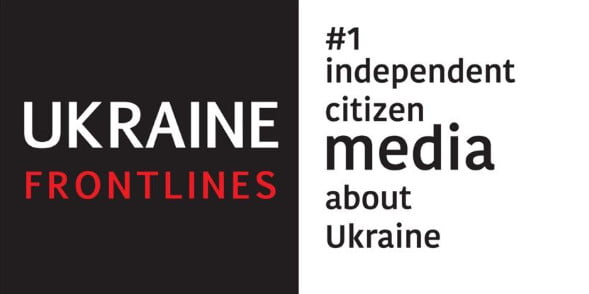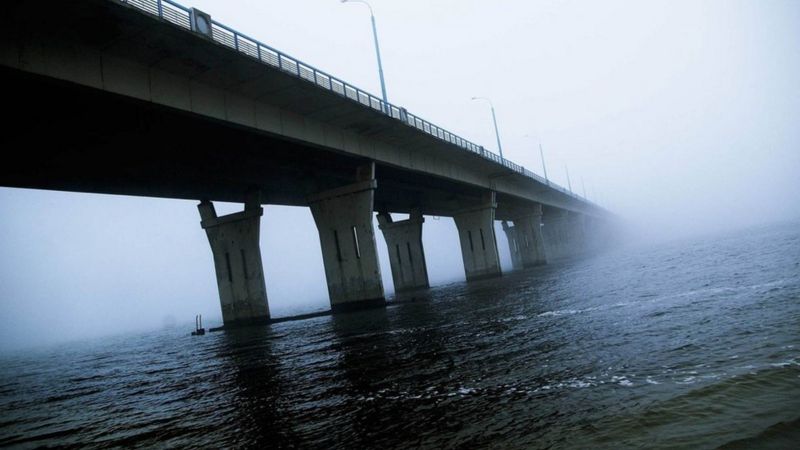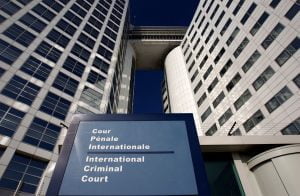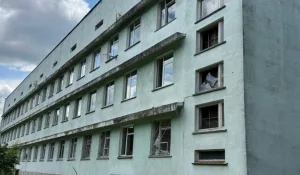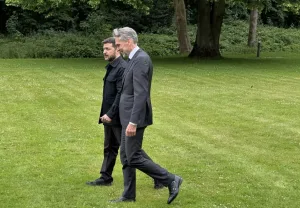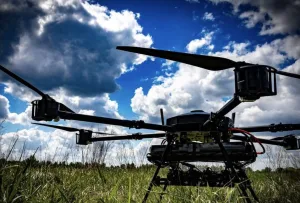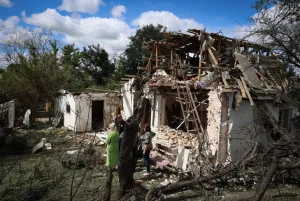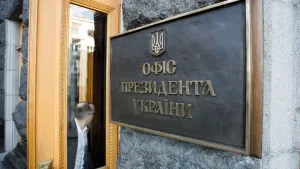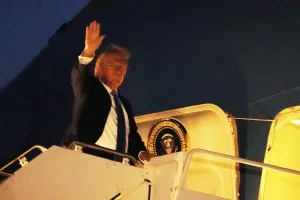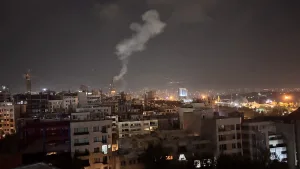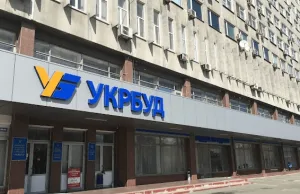The breakthrough of the Russian army from Crimea into Kherson is perhaps the greatest achievement of its “blitzkrieg” attempt in Ukraine. During the first days of the war, Russian assault groups were able to advance from the peninsula to the right bank of the Dnipro and capture Kherson.
The pivotal factor of success then was the control of local bridges, which, in the presence of such a large water obstacle as the Dnipro, has strategic importance for the speed of offensive operations.
And although the Ukrainian army could stop the further advance to Mykolaiv and even push back the Russians, the enemy kept their bridgehead on the right bank of the Dnipro.
However, the future of this enemy group raises many questions since the Armed Forces of Ukraine started striking bridges in the Kherson region. Especially against the background of the gradual counter-offensive of the Armed Forces in the Kherson region.
How important are the bridges over the Dnipro, and how can their destruction affect the battles for the Kherson region?
The Antonivsky bridge and other crossings
The Dnipro in the Kherson region has three crossings: the Antonivsky automobile bridge (or simply Antonivsky bridge) near Kherson, the Antonivsky railway bridge 6 km from it, and the dam of the Kakhovsky reservoir in Nova Kakhovka, another 70 km away.
The Antonivsky bridge is pivotal for the region since it is the largest and closest to the main city of the region.
The bridge was built in 1985. It has 31 piers, is 25 meters wide, and is 1,366 meters long. It crosses two rivers at once: the Dnipro and its left tributary the river Konka.
The Russian army captured the Antonivsky bridge on the second day of the war. On February 25, the Kherson regional administration reported that “despite the desperate efforts of the Ukrainian army, the control over the crossing to Kherson has unfortunately been lost.”
Why the Ukrainian army did not blow up the Antonivsky bridge in the first days of the invasion is one of the main mysteries of that stage of the war (along with the fact that the crossing in Chongar was not blown up).
Especially since, according to most military observers, the destruction of these bridges was part of the defense plans for the south of Ukraine and was worked out in the exercises.
There are many unverified versions of treason or similar actions of the security forces. Even during the dismissal of Ivan Bakanov from the post of head of the SBU, the failure in the Kherson region in the first days of the war and the role of the local head of the special service were mentioned.
Although the reason the Antonivsky bridge remained intact on February 24 and 25 may be the general chaos of the first days of the war, as well as the intense movement of civilians through it.
Dmytro Dozirchy, commander of the tank company of the 59th Separate Motorized Infantry Brigade, which was defending the bridge at the time, recalls being shocked by the actions of civilians during the fighting for the crossing.
“So, you have a tank driving across the bridge, opening fire on enemy targets, and here is a car on the way: people are honking, flashing, waving their hands, taking pictures. And then a truck appears, the enemy fires, maybe they were aiming at our tank but hit the truck. And so, it’s on fire, but people are still driving, making videos with their phones. And it was a shock for me! We had active combat operations to unblock the bridge, and people were like in some kind of a 5D movie in the first row,” says the tankman.
The dam of the Kakhovka HPP is another crossing over the Dnipro in the Kherson Region. It was captured by the Russians immediately on February 24. It is where the North Crimean Canal begins, the unblocking of which was one of Russia’s long-standing goals.
‘Cauldron’ for the Russian group
The first strike of the Armed Forces of Ukraine on the Antonivsky Bridge was on July 19, then they did it again, and the local occupation authorities announced the forced closure of the crossing.
“We will block the traffic. We will find other ways to cross the Dnipro to get to the city of Kherson. The city will not be left without a connection with the left bank,” said Kyrylo Stremousov, the so-called ‘deputy head’ of the occupation authorities of the Kherson region, in a conversation with Russian media.
The shelling near the HPP in Nova Kakhovka was reported earlier.
“The Antonivsky bridge and the bridge in Nova Kakhovka are communication points. The possibility of conducting hostilities by Russian troops on the Right Bank depends on them. These are two key highways through which the Russian army threatens Mykolaiv and Kryvyi Rih,” explains military correspondent Yuriy Butusov on the channel “Butusov+”.
“After the bridges are destroyed, it will be very difficult for the enemy to supply their troops on the Right Bank using pontoon bridges. It will be risky, and the capacity of the pontoons is much smaller. Thus, conditions will be created for more active actions of Ukrainian troops, and it will be possible to liberate the right-bank part of the Kherson region and approach Kherson and Nova Kakhovka,” adds Yuriy Butusov.
Speaking to BBC News Ukraine on the condition of anonymity, a Ukrainian officer, who serves in the south, confirms the importance of blocking the Antonivsky bridge now.
“If we ‘cut’ Nova Kakhovka, the entire Russian group will be in the ‘bag’. Without logistics, they are done. They understand the risk of the encirclement and are already bringing in the pontoon bridges,” says the military man.
“But pontoons take a lot of time. Plus, if we get to the bridge, it will be even easier to hit the pontoons,” he notes.
“The Armed Forces of Ukraine can easily reach Nova Kakhovka and will gradually take the crossing there under fire control,” says a military officer.
The Russians apparently had high hopes for the Chornobayivka airfield in supplying the Kherson group with aviation from the Crimea back in March but after numerous shellings, it can no longer be an alternative to the bridges.
The military observer and publicist Mykhailo Zhyrokhov, in a conversation with BBC News Ukraine, emphasizes that it is important for the Ukrainian army to block the railway bridge as well.
“Speaking only of the Antonivsky bridge and the Novokakhovka dam, we must not forget about the railway bridge. In the present circumstances, it is becoming even more important for the Russians than the first two because we know that the logistics of the Russian army depends, above all, on railway transportation”, he says.
However, an officer from the south indicates that the Russians are afraid of using the railway bridge because of the strike threats.
The bypass road
Blocking both automobile and railway bridges endangers the Kherson garrison of the Russian army, even if the dam in Nova Kakhovka remains intact.
In addition to stretching logistics for a 70-kilometer detour on the right bank of the Dnipro, this creates new challenges for the provision of Russians.
After all, the bypass road also passes through the river – this time the Ingulets. There is only one bridge over it – in the village of Daryivka.
It can also be destroyed.
“And it will not be difficult to demolish the pontoon bridges over the Ingulets using Himars,” predicts the Ukrainian officer.
Destruction or fire control?
At the same time, destroying (and not damaging) bridges, especially such powerful ones as Antonivsky, is quite a challenge for rocket artillery.
“The Armed Forces do not have the firepower to destroy the Antonivsky bridge. All these shellings we have heard of in the past days are rather preventive in nature. For real destruction, we need not HIMARS with missiles with a 90-kilogram warhead, and not even Tochkas. We need massive air strikes with 500-kg bombs here,” Mykhailo Zhyrokhov notes.
“Even the Russians with their greater capabilities destroyed the bridge across Zatoka at their fourth attempt. Even after that, there are still some questions about the result,” he adds.
“That’s why, I think, our command perfectly understands the problem of the complete destruction of the bridge and only plans to take all three bridges under fire control to cut off the supply in this way,” the military observer suggests.
Kherson journalist Ivan Antypenko writes about the symbolic significance of the Antonivsky bridge strikes, “The successful actions of the Armed Forces of Ukraine around the bridge and strikes on Russian warehouses have a serious psychological effect. Ukrainians who remain under occupation see that Ukraine has not left them. And it does not matter what the Russian propaganda says about it.”
At the same time, the destruction of the Antonivsky bridge will theoretically make it difficult for the Ukrainian army to advance on the left bank of the Dnipro in the Kherson region if it succeeds in recapturing the right bank.
However, the Russian army will most likely blow up the crossing anyway while retreating.
“Of course, the fact that the Antonivsky bridge will have to be rebuilt later is a downside. But there are more pros (its blocking – ed.). It is the opportunity to bring the Russians to surrender and save Kherson from destruction,” – believes a Ukrainian officer fighting in the south.
Tags: russia ukraine war